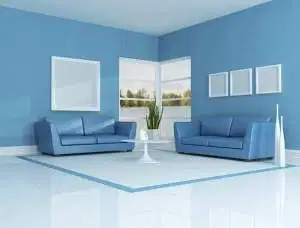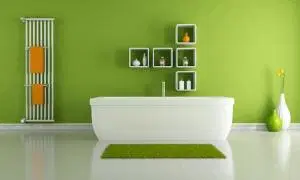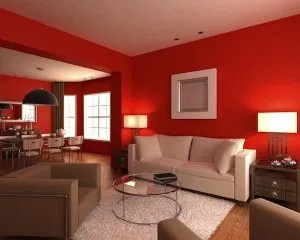Understanding that there are 100,000 colors that are discernible to the naked eye … it can be a very challenging selecting what color palette to use in your home – especially if you are trying to sell it! This article on Realtor.com by Angela Colley is an excellent primer on how to view the potential that this small change can make in a home!
From seeing red to feeling blue, color plays a big role in our emotions. Some colors make us feel happy or relaxed, while others can make us feel anxious. When you’re selling your home, the colors you choose can play on potential buyers’ memories and emotions, changing the way they see your home.
Choose wisely, and the next color you might see is green.
Yellow
 We typically associate yellow with happiness and light, making it the ideal shade to make windowless spaces such as hallways feel sunny, or to create the feeling of joy in family-gathering areas such as the kitchen. But choose the shade with caution.
We typically associate yellow with happiness and light, making it the ideal shade to make windowless spaces such as hallways feel sunny, or to create the feeling of joy in family-gathering areas such as the kitchen. But choose the shade with caution.
“Yellow is such a statement color. People either love yellow or they hate it,” says Lauren Colson, founder of LMC Interior Designs in Atlanta, GA, who specializes in color consultations for residential dwellings. “If you want to use it in your home, I’d stick to soft yellow shades in a warm buttery base.”
Blue
 Blue’s different hues can conjure up a range of emotions. Light hues create a feel of tranquility.
Blue’s different hues can conjure up a range of emotions. Light hues create a feel of tranquility.
“Spa blues are reminiscent of the ocean and water in general, which are both relaxing and peaceful,” Colson says.
“Separated dining rooms are the perfect place to try out a deep navy or dark gray, because they are supposed to feel cozy and inviting instead of open and expansive,” she added.
Green
 “Green is commonly associated with nature, so it naturally gives off a soothing and calm vibe,” Colson says.
“Green is commonly associated with nature, so it naturally gives off a soothing and calm vibe,” Colson says.
That vibe makes green a perfect complement to almost any room in your house. For example, paler greens like seafoam or sage have a calming effect best suited to bathrooms, while darker, earthy shades of green such as moss or evergreen create a sense of quiet and peace––perfect for a cozy den space.
Gray
 Gray is much more than a neutral color. Most shades pair well with other colors, making this an ideal choice for connecting spaces such as hallways and entryways. But the right shade of gray can play on some powerful emotions. Light hues have a softness, making us feel calm and relaxed, while darker hues feel warm. Selecting the right hue isn’t always an easy choice, though.
Gray is much more than a neutral color. Most shades pair well with other colors, making this an ideal choice for connecting spaces such as hallways and entryways. But the right shade of gray can play on some powerful emotions. Light hues have a softness, making us feel calm and relaxed, while darker hues feel warm. Selecting the right hue isn’t always an easy choice, though.
“Gray is a tricky, tricky color,” Colson says. “There are so many different hues of gray that if you’re not careful you can end up with an icy cold room instead of a warm retreat.” The key is choosing a gray with the right base color. For example, a beige-based gray will create warmth, while a blue-based shade will have more of a cooling, icy effect.
Brown
 At first glance, brown might not seem like the most exciting––or inviting––color, but brown hues are also part of the palette of colors we associate with nature’s calming effects, Colson says. Richer hues create a sense of coziness and quiet, making them perfect for a den or entertainment space where potential buyers could imagine spending time with their family.
At first glance, brown might not seem like the most exciting––or inviting––color, but brown hues are also part of the palette of colors we associate with nature’s calming effects, Colson says. Richer hues create a sense of coziness and quiet, making them perfect for a den or entertainment space where potential buyers could imagine spending time with their family.
Lighter shades such as beige are quite and calming, perfect for a formal living room, study, and hallways.
What NOT to use!!
 Not all colors will create the positive emotions you want buyers to feel.
Not all colors will create the positive emotions you want buyers to feel.
“I usually suggest to clients to avoid oranges and reds in any type of space,” Colson says. “They make people feel anxious and angry.”
Instead, focus on creating a neutral palette that buyers will associate with “homey” feelings.
